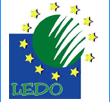| |
Indicators are tools to facilitate effective
decision-making. They are used to show the condition of a specific parameter.
Indicators help in measuring sustainable development through:
- Improving the quality of information and simplifying its
interpretation and management
- Assessing environment and development trends overtime and in
relation to goals and targets
|
| |
Significance of Indicators
-
Provide information to the general public as well as early warning information
- Help
quantify the situation, highlight its significance, monitor progress and
changing trends
- Help
simplify the data and present it in a form directly relevant to the problem
being addressed * 6 Guide decision-makers to the status of the current
priorities
-
Enable decision-makers to evaluate and compare the implications of their
policies/choices
-
Facilitate external scrutiny of decisions and policies, thus ensuring
transparency and accountability
|
Working with Indicators
- An
indicator must be specific, measurable relevant, simple, and repeatable
- An
indicator must be reported and interpreted in the appropriate context, taking
into account the ecological, geographical, social, economic and structural
features of a country
- The
interpretation of an indicator is specific to each stakeholder in his own
domain
- To be
useful, indicators need to be evaluated relative to a certain target, limit,
legal requirement or international/ regional standard
Indicators provide a common base for information exchange among the
different stakeholders, monitor trends per a definite baseline and help in the
development of coherent planning processes to address problems.
|
Types of Indicators
- Pressure Indicators: Human activities that exert
stresses or pressures on the environment and change it (i.e. population growth,
use of pesticides, industrial releases into water…)
- State Indicators: The quality and quantity of natural
resources, and the quality of the environment (i.e. level of air pollution,
burnt area, forest area…)
- Response Indicators: The actions adopted (environmental,
economic, institutional or sectoral policies) in response to changes (i.e.
regulatory action, legislation, environment or research expenditure…)
|
|
|
|
